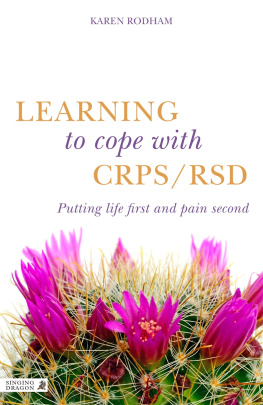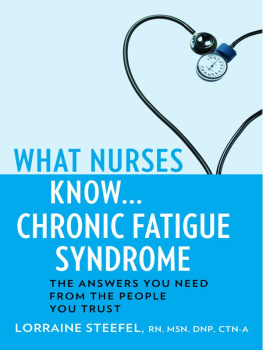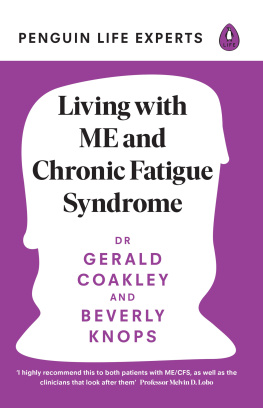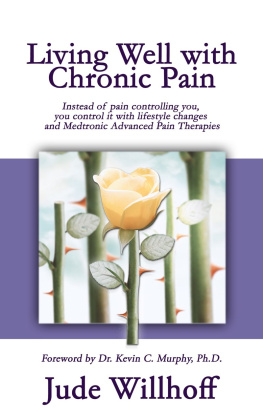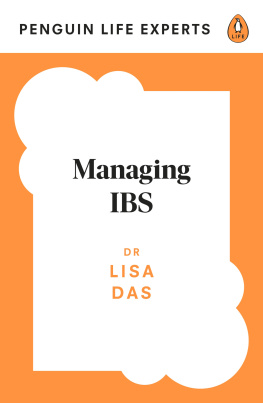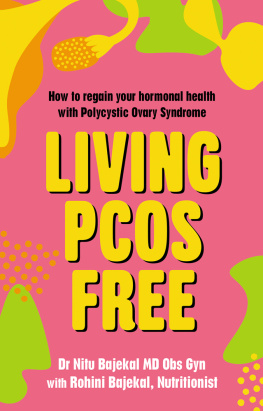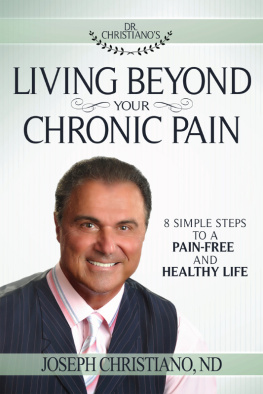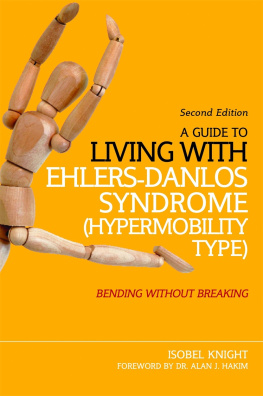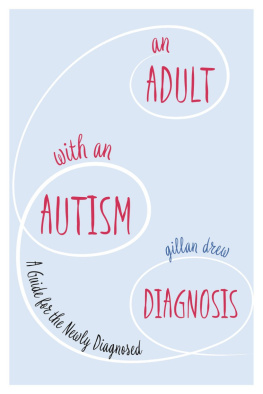
LEARNING
to cope with
CRPS / RSD
of related interest
The Mystery of Pain
Douglas Nelson
ISBN 978 1 84819 152 5
eISBN 978 0 85701 116 9
Breaking Free from Persistent Fatigue
Lucie Montpetit
ISBN 978 1 84819 101 3
eISBN 978 0 85701 081 0
Principles of EFT (Emotional Freedom Techniques)
What it is, how it works, and what it can for you
Lawrence Pagett
With Paul Milward
Foreword by Dr Silva Hartmann
Part of the Discovering Holistic Health series
ISBN 978 1 84819 190 7
eISBN 978 0 85701 151 0
LEARNING
to cope with
CRPS / RSD
Putting life first and pain second
KAREN RODHAM

LONDON AND PHILADELPHIA
The Four Pillars of Care (p.17), copyright 2012 Royal College of Physicians, reproduced with permission from Goebel, A., Barker, C.H., Turner-Stokes, L. et al. (2012) Complex Regional Pain Syndrome in Adults: UK Guidelines for Diagnosis, Referral and Management in Primary and Secondary Care . London: RCP.
This edition published in 2015
by Singing Dragon
an imprint of Jessica Kingsley Publishers
73 Collier Street
London N1 9BE, UK
and
400 Market Street, Suite 400
Philadelphia, PA 19106, USA
www.singingdragon.com
First edition published by the author in 2013
Copyright Karen Rodham 2013, 2015
Front cover image source: Dengess | Dreamstime.com - Flowering Cactus Photo
All rights reserved. No part of this publication may be reproduced in any material form (including photocopying or storing it in any medium by electronic means and whether or not transiently or incidentally to some other use of this publication) without the written permission of the copyright owner except in accordance with the provisions of the Copyright, Designs and Patents Act 1988 or under the terms of a licence issued by the Copyright Licensing Agency Ltd, Saffron House, 610 Kirby Street, London EC1N 8TS. Applications for the copyright owners written permission to reproduce any part of this publication should be addressed to the publisher.
Warning: The doing of an unauthorized act in relation to a copyright work may result in both a civil claim for damages and criminal prosecution.
Library of Congress Cataloging in Publication Data
Rodham, Karen, 1970
Learning to cope with CRSP/RSD : putting life first and CRPS/RSD second / Karen Rodham.
pages cm
Includes bibliographical references and index.
ISBN 978-1-84819-240-9 (alk. paper)
1. Reflex sympathetic dystrophy--Popular works. 2. Reflex sympathetic dystrophy--Patients--Biography. I. Title.
RC422.R43R64 2015
616.0472--dc23
2014013397
British Library Cataloguing in Publication Data
A CIP catalogue record for this book is available from the British Library
ISBN 978 1 84819 240 9
eISBN 978 0 85701 188 6
Not in ten years
To all the Gadds and Gaddlets
thank you for being you.
ACKNOWLEDGEMENTS
Id like to take this opportunity to thank my colleagues (who are, truth be told, now friends too) at the Royal National Hospital for Rheumatic Diseases (RNHRD), with whom I have very much enjoyed working, and Id also like to thank all the people living with CRPS who have shared their stories and experiences with me as we have worked together to find a way to cope with the challenges that come with CRPS; you have all taught me so much. Of course, I would also like to thank the RNHRD Donated Funds and Charitable Trustees Committee who funded the research that informs part of this book (Ref. RBB347). Lastly, thank you to Alison and to Julie who gave up their precious time to read and comment on earlier versions of this book.
CONTENTS
INTRODUCTION
In the UK we use the term Complex Regional Pain Syndrome (CRPS), but in America, it is more common to use the term RSD (Reflex Sympathetic Dystrophy). Throughout this book, I will be using the UK term CRPS.
If you are reading this book, I imagine you are either living with CRPS yourself or know someone who has the condition. This book is something I have wanted to write for a while. I have been working with people living with the chronic form of CRPS since 2006 and now feel as if I have enough of an insight into this difficult-to-live-with condition to share the lessons I have learned from the people I have worked with.
It is my hope that this book will be useful to those who are themselves living with chronic CRPS, because within its the pages they will see that they are not alone. I also hope it will be a useful resource for friends, family and colleagues of people living with CRPS, because it will enable them to have a glimpse of what it is like to live with CRPS. Through this glimpse, their understanding will grow and their ability to support the person who has CRPS will grow too.
I have also written this book as a last offering in my role as CRPS Health Psychologist, for I will be leaving the Min shortly after this book is published and I wanted to make sure that the knowledge I have been privileged to gain over the past seven or so years is presented in book form so that other psychologists can build on the lessons I have learned, and, perhaps most importantly, I hope that people living with CRPS and their friends and family will find the content useful.
Chapter
WHAT IS CRPS?

C omplex Regional Pain Syndrome (CRPS) is a pain condition that usually occurs after an injury, but it can start spontaneously (Harden et al . 2010; Kozin 2005; McBride and Atkins 2005; Stanton-Hicks 2006). Burning pain is the most characteristic symptom, but people also report swelling, coldness, colour changes, hypersensitivity, as well as increased sweat and hair growth. A person who is herself living with CRPS, who very kindly read a draft of this book, told me that although the original description of the symptoms that I had included was technically correct, she felt it downplayed the experience of pain. To her, CRPS was pain, pain, pain. I promised to include her quote to make sure that this was absolutely clear. Although the symptoms are usually experienced in a single limb, it is possible for CRPS to occur in more than one limb, and indeed in other body regions (Baron et al . 2002; Galer et al . 2000; Kozin 2005; Stanton-Hicks et al . 1995; Veldman et al . 1993). For an estimated 7 per cent of people, CRPS can spread to other limbs.
Many people who have CRPS experience it as a transient problem. De Mos and colleagues (2009) suggest that about 85 per cent of people improve within the first year after onset, but Goebel and colleagues (2012) point out that it is important to remember that improvement does not necessarily equal recovery. Indeed, they go on to say that a definition of what constitutes recovery has not yet been agreed. It might be more accurate to say that, rather than the symptoms disappearing, improvement means that people have found a way to live with the symptoms. So, there is a significant minority of people (about 1520%) who will develop chronic CRPS. For this group of people, the experience of long-term symptoms or impairment is common. It is this group of people that I have worked with since 2006, and it is this group who are essentially living with a long-term chronic pain condition that this book is directed at.
DIAGNOSIS
Next page
